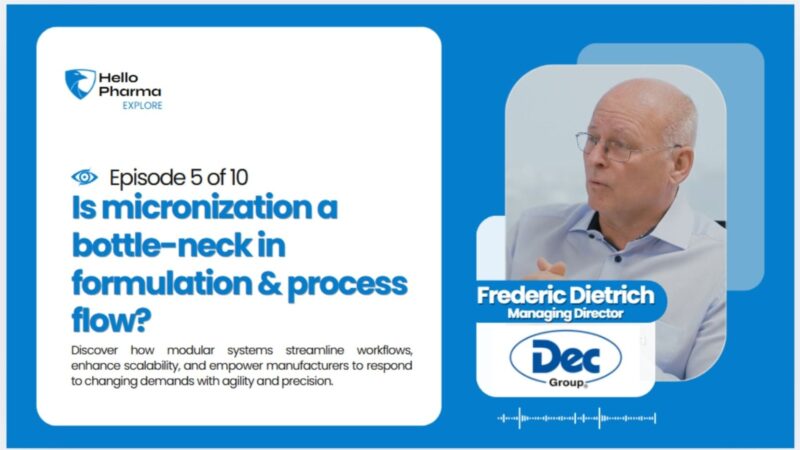Micronization plays a critical role in pharmaceutical manufacturing, particularly in the development and production of oral solid dosage forms. In Episode 5, we explore the significance of micronization in the formulation process and examine whether it can be a bottleneck in achieving efficient, high-quality manufacturing.
Mr Frederic Dietrich, Managing Director of Dec Group, joins us to share insights on how micronization impacts particle size distribution, dissolution rates, and bioavailability, all of which are crucial for product performance and patient outcomes. We begin by discussing why micronization is often a necessary step for APIs with poor solubility or bioavailability. By reducing particle size to the micron or sub-micron scale, manufacturers can improve the surface area-to-volume ratio, enhancing dissolution rates and overall therapeutic effectiveness.
However, integrating micronization into formulation and process flow requires careful consideration. Mr Dietrich highlights that while micronization addresses important formulation challenges, it can also introduce potential issues if not properly managed. These include powder flow problems, dust generation, and challenges in downstream blending or granulation.
The episode examines how advanced micronization techniques and equipment help mitigate these challenges. Technologies like spiral jet mills and classifier mills offer precise control over particle size distribution and minimize the generation of ultra-fine particles that can complicate further processing. Mr Dietrich shares how modern equipment design focuses on achieving consistent particle size while maintaining containment and minimizing exposure risks, especially for high-potency or sensitive compounds.
We also explore how micronization fits within broader process integration strategies. Micronization often requires specific environmental controls to ensure product and operator safety, such as isolators or contained transfer systems. Mr Dietrich discusses how integrating micronization into a contained production line can streamline workflows and reduce cleaning or changeover times, addressing potential bottlenecks in overall process flow.
Another key aspect discussed is scalability. While micronization can be effectively implemented in laboratory or pilot-scale settings, scaling up to commercial production demands careful consideration of equipment capabilities, process control, and regulatory compliance. Mr Dietrich shares insights on how manufacturers can leverage modular equipment configurations and robust validation strategies to ensure that micronization does not become a constraint as production volumes grow.
Finally, the episode considers the future of micronization within the context of continuous manufacturing and digital transformation. As continuous processing gains traction in pharmaceutical production, micronization equipment is being adapted to operate within continuous lines, enabling real-time control and consistent product quality without disrupting downstream processing.
Join us as we explore the pivotal role of micronization in formulation science and process integration. Learn how technology and thoughtful system design can turn this critical step from a potential bottleneck into an enabler of quality and operational efficiency.
For more in-depth content and resources on pharmaceutical technology and advanced manufacturing processes, visit www.hello-pharma.com.






